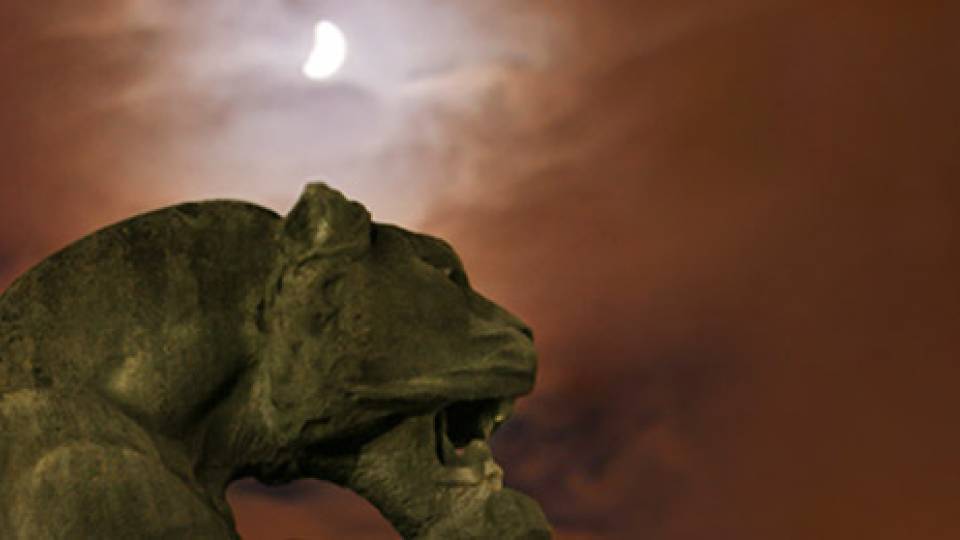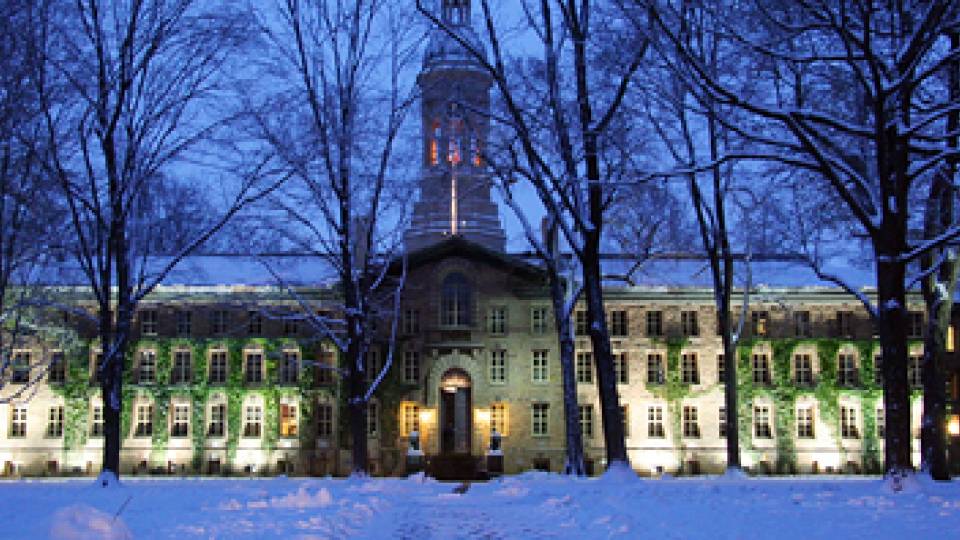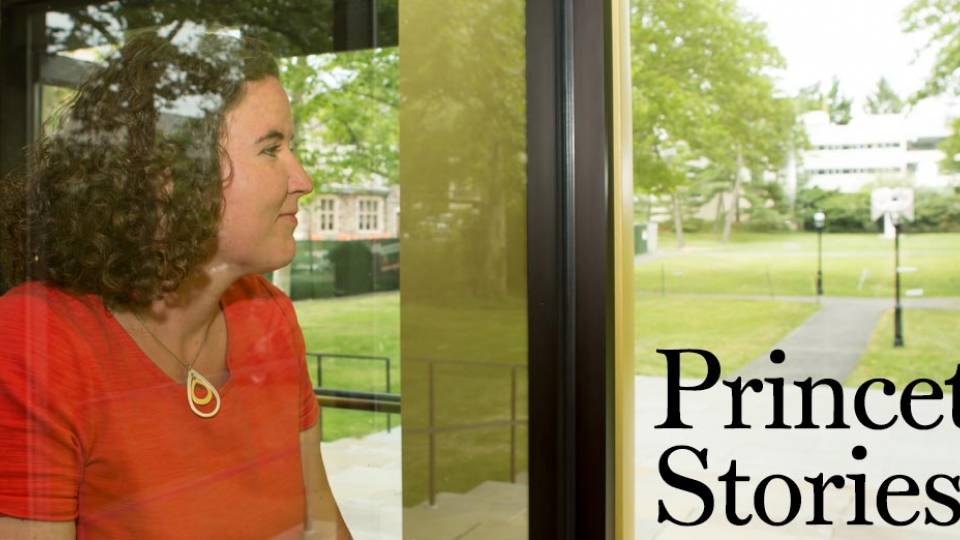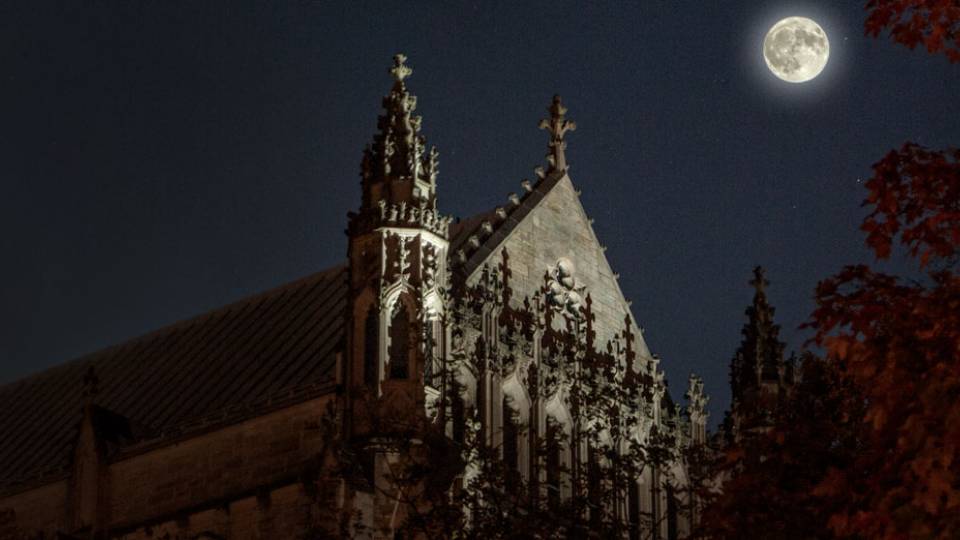Princeton’s gargoyles, the small grotesque animal or human figures carved in stone, can be found at dozens of locations on everything from downspouts to arches.
“The Gargoyles of Princeton University: A Grotesque Tour of the Campus,” a book produced by the Office of Communications, provides a glimpse and description of many of those figures.
- The “literate ape” is one of four figures over the main doors at Dillon Gymnasium, which was built in 1947. “The carving is very stylized -- his hair and beard are composed of triangles and chevrons,” according to the publication. “Look closely at his book; it has only four pages. Economy of strokes and exaggeration of features make the sculpture readable from a distance.”
- A “football runner” makes a perennial sprint over the west doorway of McCosh Hall, which was built in 1907. He is dressed in the football uniform of a bygone era: quilted pants, a laced shirt and a turned-up stocking-knit cap. Football player gargoyles also appear on Dillion Gymnasium and Foulke Hall.
- The “unseeing reader” makes its home over the east arch of East Pyne, built in 1879, facing Firestone Plaza. “Technically, this figure with blindfolded eyes is a chimere, a decorative carving,” the book states. “It represents the type of architectural ornamentation that is appropriately symbolic of the University’s purpose -- opening the eyes of those who seek understanding and casting aside the obstructions of prejudice.”
- “Head of a soldier” can be found on the northwest end of Henry Hall, built in 1922. It is intended as “not only the depiction of one man, but of many men who died during wars,” according to the book. “They are commemorated by the bronze stars on the window sills of the dormitory rooms where they once lived. The soldier looks toward an open sky, perhaps to a better world. His expression is placid and hopeful.”
For more information on Princeton’s gargoyles, visit the online version(Link is external) of the publication.







